
10 Low Maintenance Plants for Small Gardens
We’re often asked about low maintenance plants for small gardens, so here are ten of our favourites.
Small gardens are very special places that are only made better by the addition of carefully chosen plants. When space is limited, its even more important that the plants work extra hard. So look for features such as evergreen foliage, a long flowering period, coloured leaves, autumn fruits or berries, strong shapes, movement, sound and scent.
When choosing low maintenance plants for small gardens, don’t forget to think about cloaking walls and fences in greenery. Going vertical allows you to fit more plants into the space and blurs the edges of the garden, making it feel much larger.
Each one of the plants on our list has at least one feature that we think adds value to a small garden. Don’t forget that these beauties can be underplanted with bulbs such as Muscari, crocus, tulips, narcissi and even gladioli for summer colour.
- Pyracantha trained as a wall shrub
- Ballerina type fruit trees
- Evergreen topiary shrubs for shape and form
- Hardy geraniums for easy care and a long flowering period
- Ornamental grasses for movement, sound and volume
- Lavender for colour, scent and attracting bees
- Fatsia japonica for exotic greenery
- Sarcococca for uplifting aromas in the middle of winter
- Hellebore beautifully shaped leaves and attractive early spring flowers
- Hebe (Veronica) for neat shrubs and lots of flowers
Pyracantha
When most people think about vertical gardening they consider honeysuckle, climbing roses or the ever popular Trachelospermum. But don’t forget that many shrubs can also be trained to cover a wall. Pyracantha is one such beauty and it offers incredible value for money.
First and foremost, that evergreen foliage looks fabulous all year round. But in late spring, pyracantha is covered with thousands of tiny white flowers. Bees find the blooms irresistible and you’ll be treated to happy buzzing sounds as they collect the pollen and nectar.
In autumn, Pyracantha displays colourful berries in either red, orange or yellow, depending on the variety you have chosen. Birds will happily feast on the fruit bringing movement, life and plenty of interest into your small garden.
There is a little bit of work involved in training pyracantha but the plants themselves are largely self sufficient providing they have good quality soil. If you are not a confident pruner, look for a professional gardener who can help you with this annual task.

Ballerina Fruit Trees
Yes, it is perfectly possible to grow your own fruit in a small space. Ballerina fruit trees are grown on a dwarf rooting stock which means that they are nice and compact. They can even be planted in containers.
Also known as columnar fruit trees, ballerina trees need minimal pruning and will delight you with pretty spring blossoms and delicious autumn edibles. What’s not to like?
Topiary Shrubs
Topiary shrubs and trees are evergreen woody plants that are trimmed into interesting profiles. As well as columns, globes, pyramids and other geometric forms, they can be shaped to look like people, pets, clouds or even aliens.
Use topiary to create focal points and fun features. It’s especially good at creating winter interest and, used carefully can give a very classical look and feel to a garden. Try to choose species that are resistant to pests and diseases. A garden designer will be able to advise you on this.
Are topiary shrubs ideal as low maintenance plants for small gardens? Well, certainly their size can easily be managed. And depending on the species it may need trimming once or twice a year. Trimming topiary is not a difficult job. In fact, it’s quite enjoyable. Again, an APL professional gardener will be able to assist if you don’t feel comfortable doing it yourself.
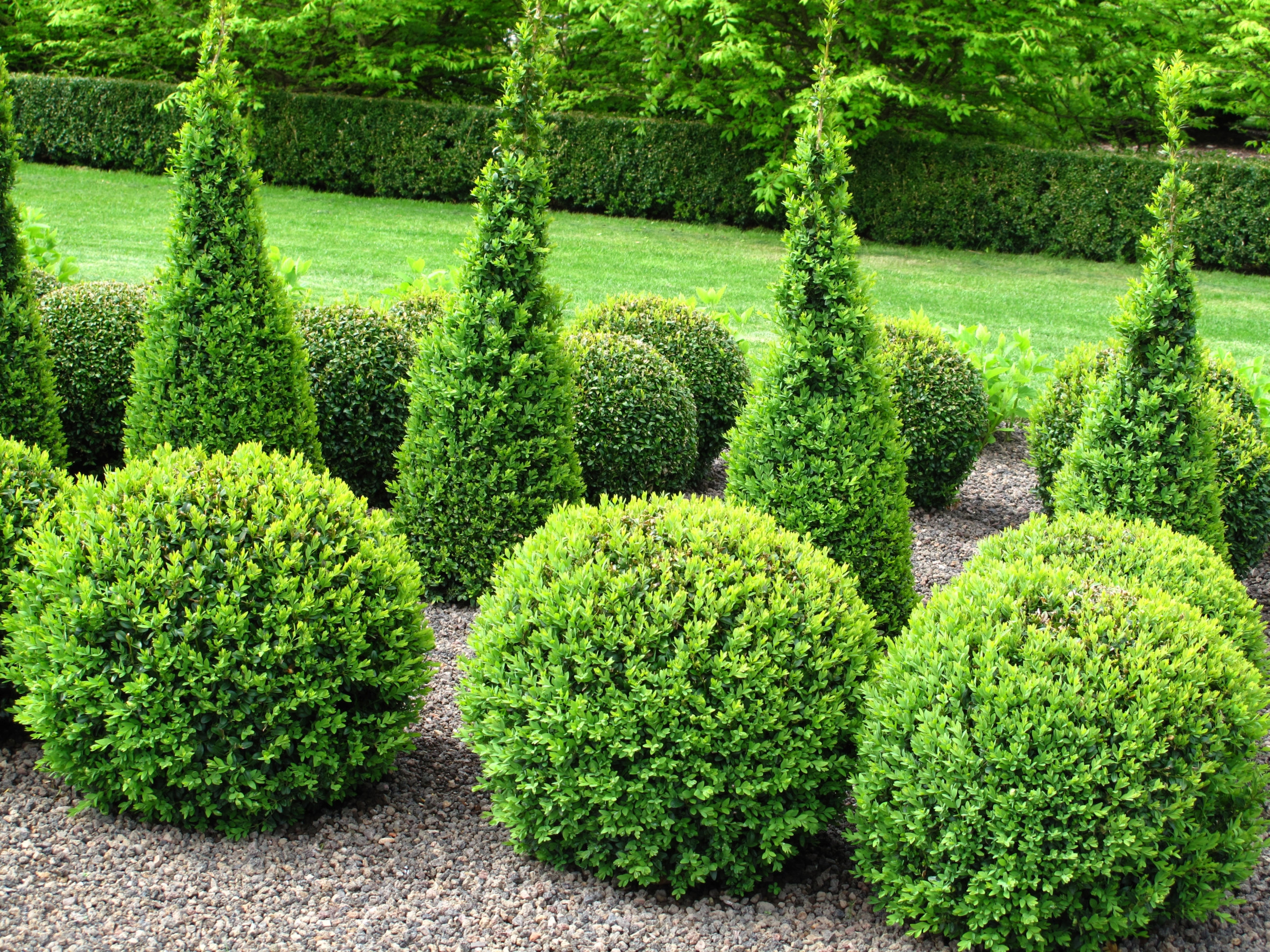
Hardy Geraniums
Hardy geraniums are perfect low maintenance plants for small gardens. Although the foliage does tend to die back a little in winter time, these plants look amazing for a good 9-10 months of the year.
They’re a cottage garden type plant. Relatively low growing, great at suppressing weeds with their foliage and superb at offering repeat flowerings throughout the warmer months of the year. They look good in borders or in containers and are pollinator friendly.
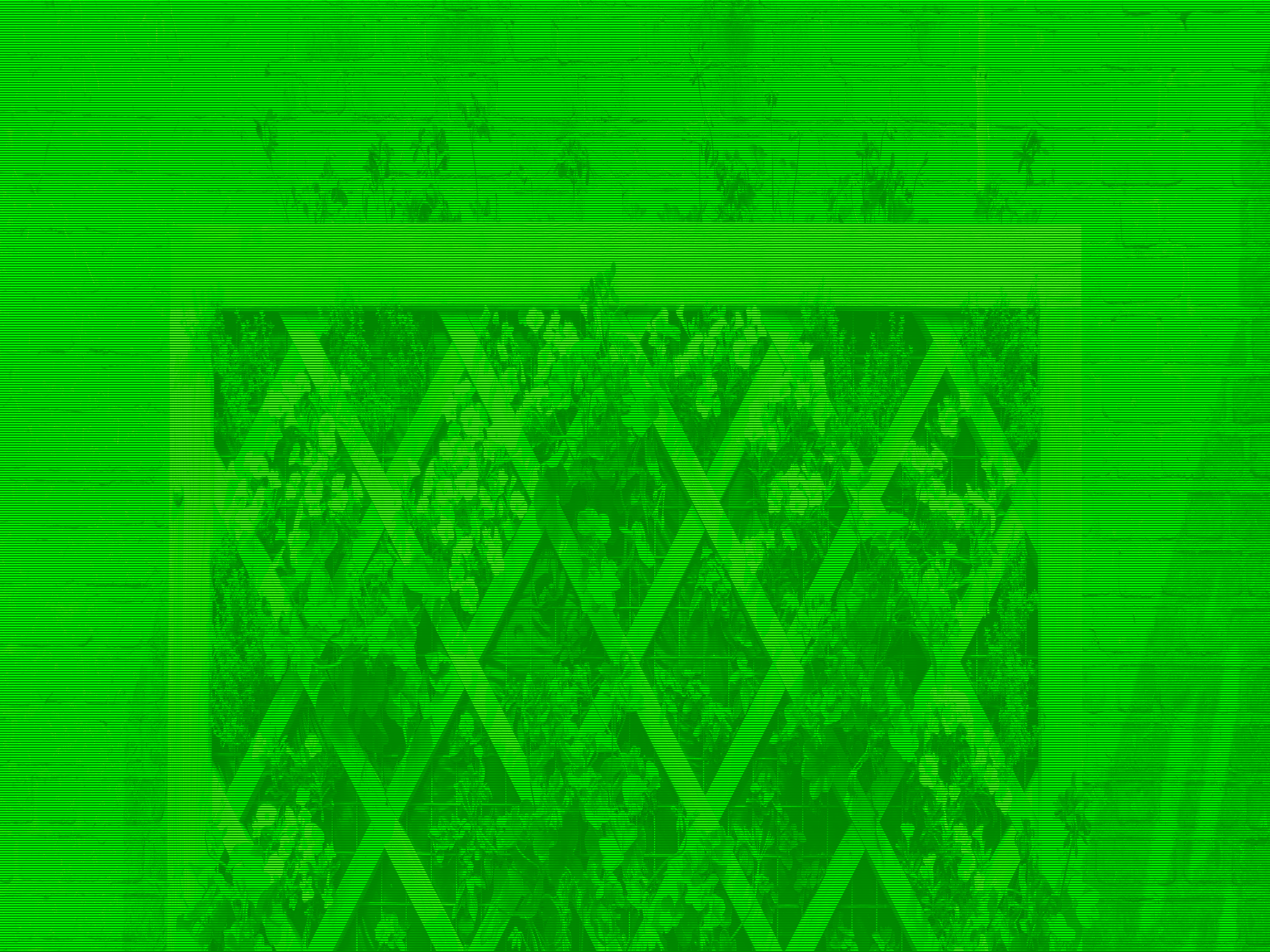
Ornamental Grasses
Ornamental grasses come in different shapes, sizes and colours and most are very easy to grow and care for. Choose wisely. Some grasses are sun lovers, others prefer shade, and like most plants, if grasses are not happy with their conditions they will let you know. Usually by dying!
Grasses are incredibly tactile. It’s almost impossible to resist running your fingers across soft, feathery seed heads. And they look wonderful when even the gentlest of breezes makes them dance and sway. At night time, clever lighting will accentuate the beauty of ornamental grasses
Image credit: Karl Harrison Landscaping
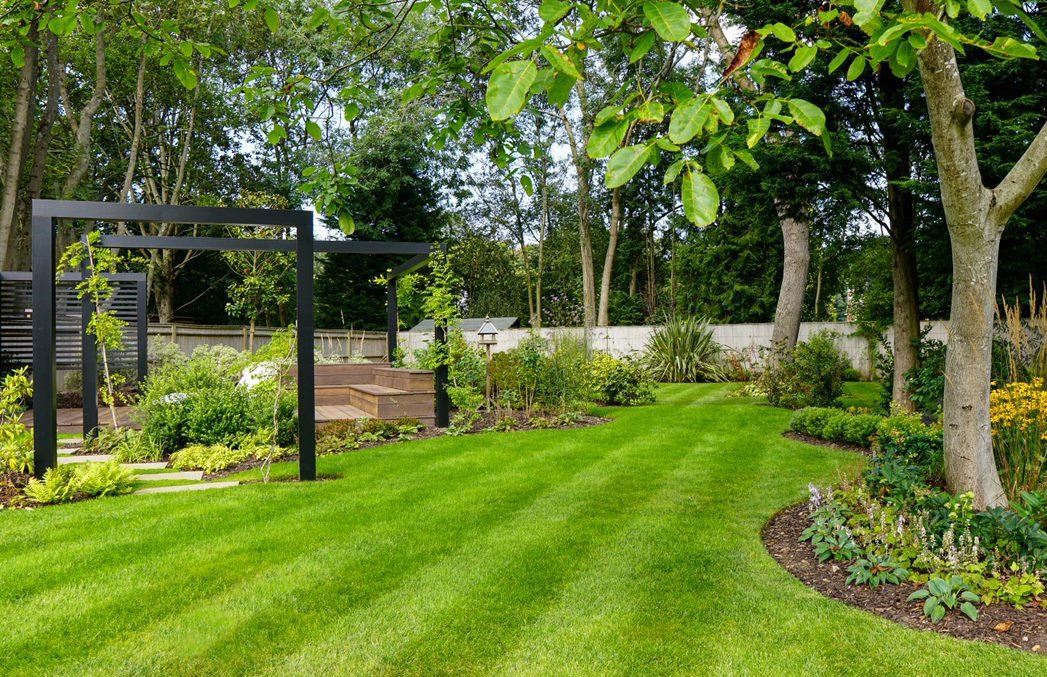
Lavender
Lavender is associated with tranquility, calmness and healing. The blue-grey foliage has an interesting texture all year round and whilst the flowers only last for a few weeks on the plant, they can be picked, dried and used in the home for all sorts of things.
Dried lavender sewn into small bags is traditionally used in drawers and wardrobes to keep insect pests at bay and to gently perfume clothing. The flowers can be used to flavour cakes, biscuits and grilled meat. Lavender can also be used to make a calming infusion to help you relax into sleep.
Low maintenance plants for small gardens need to offer as many benefits as possible - and lavender certainly comes up trumps for that.
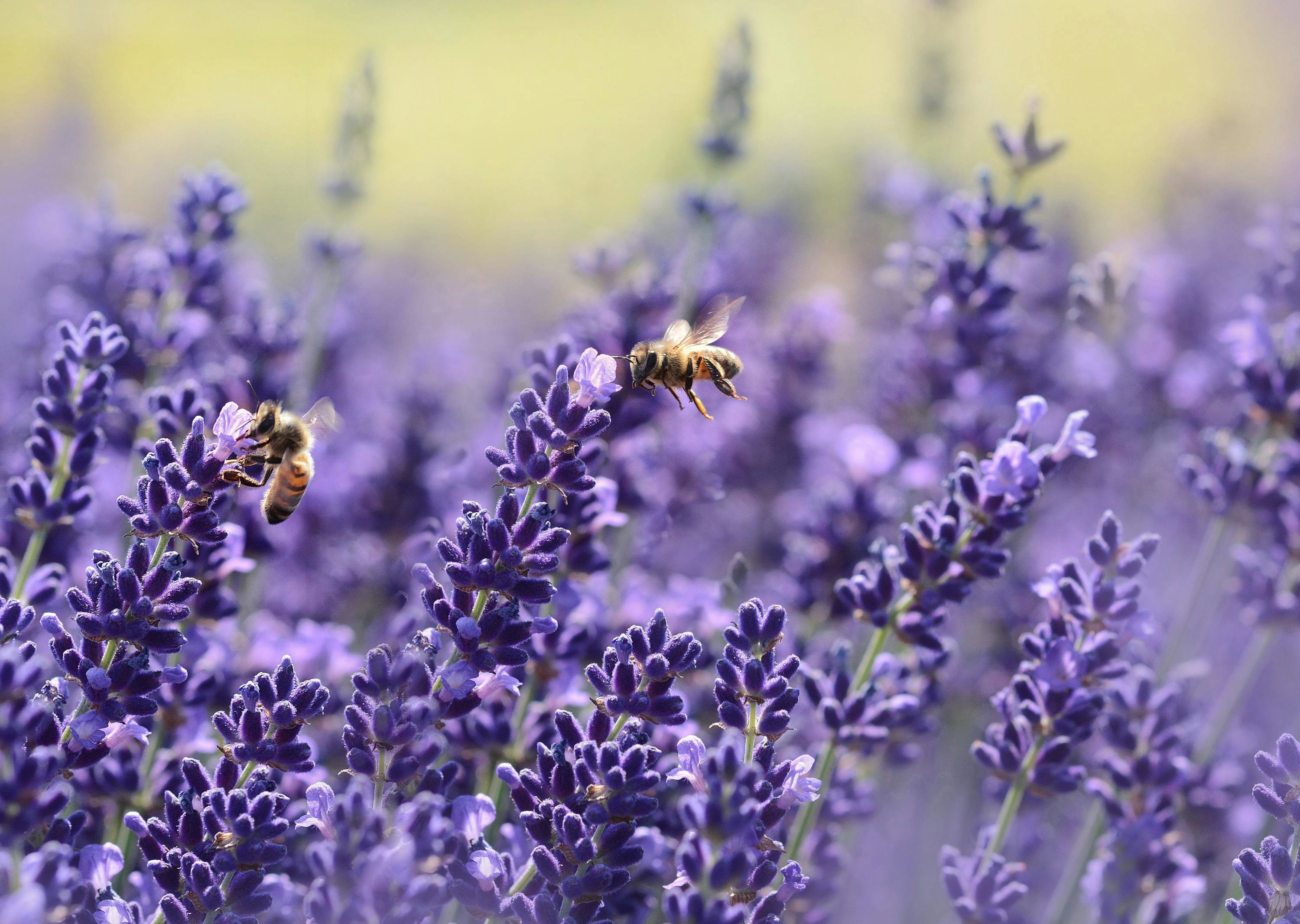
Fatsia japonica - The Castor Oil Plant
If you want your small garden to feel like a holiday destination, Fatsia japonica is the plant for you. It’s a medium sized evergreen shrub that thrives in shade and has great big exotic-looking leaves. This is quite a hungry plant, it does enjoy a good feed once or twice a year but other than that it really doesn’t ask for much TLC.
Sarcococca confusa (Sweet Box)
Although the name of this shrub is a bit of a tongue twister the plant itself is very useful indeed. It copes well with dry shade and doesn’t seem to mind urban pollution. In fact it’s quite undemanding.
It has deep green evergreen leaves that are wonderfully shiny but the best thing about Sarcococca is the tiny white flowers that appear just after Christmas. They smell divine! Your garden will be infused with the scent of vanilla and even on the most miserable winter’s day you’ll be drawn outside to enjoy the aroma.
Flowers are followed by shiny black berries. These are definitely not edible so please keep them away from pets an small children.
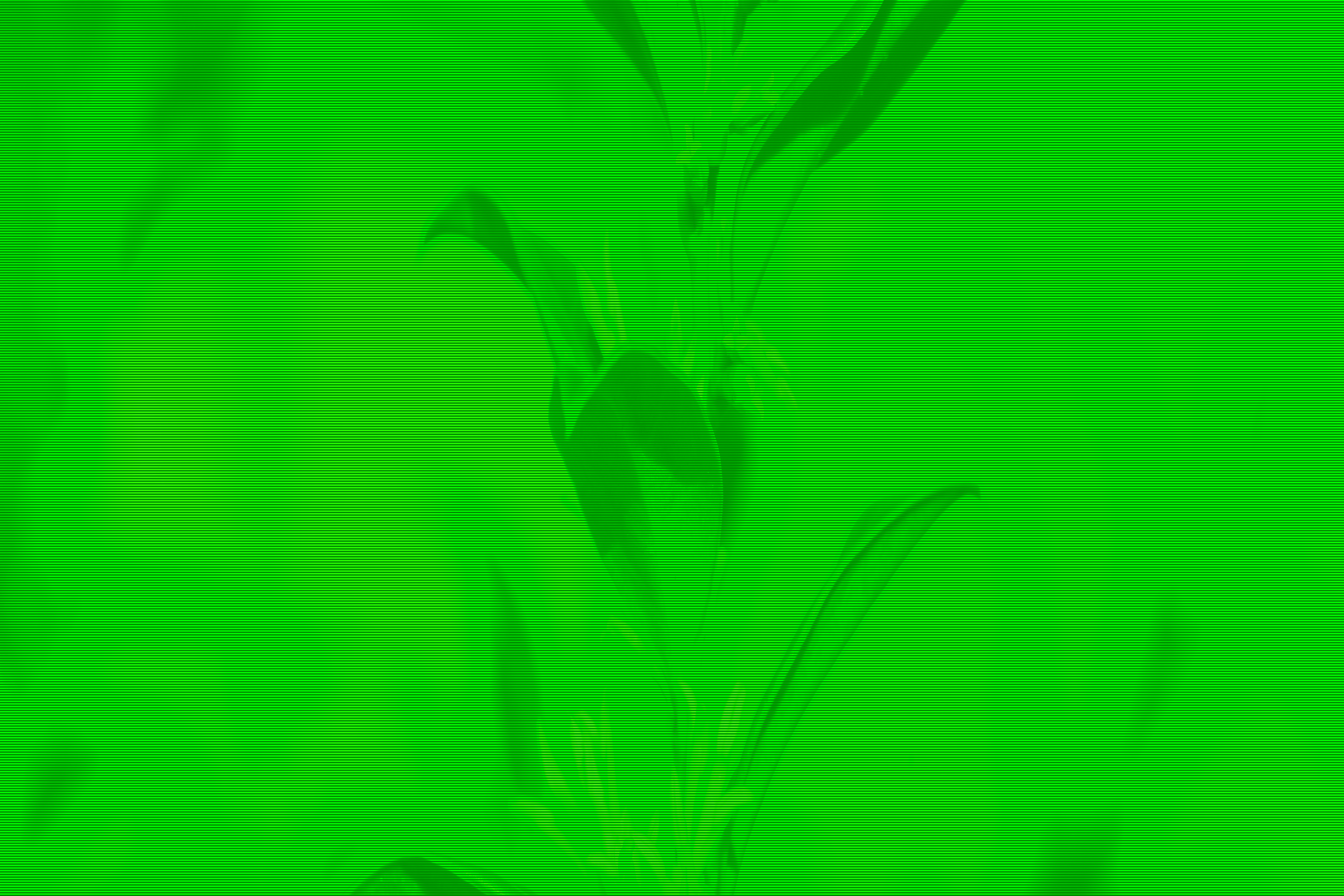
Hellebore - Christmas Rose
Hellebores come in lots of varieties with flower colour ranging from a deep burgundy to the purest of whites. These are relatively low growing plants with glossy deep green leaves that disappear in winter but push back through the soil in early spring. Flowering time is usually January to March - just before the hardy geraniums and the lavender.
Hebe
These neat little shrubs have recently undergone a name change so you may find them in the garden centres under either name. Whatever it says on the label though, hebes offer amazing value.
These low maintenance plants for small gardens love to grow in a sunny spot with decent quality soil. They flower merrily all summer long and bring butterflies and bees galore to your yard.
There are several varieties of Hebe/Veronica so look for something that complements your colour scheme. Whites look amazing at dusk and will reflect moonlight to bring an ethereal quality to your garden. Pinks are great for a soft, pastel-like colour scheme and purples look amazing against the dark green foliage of Sarcococca or Fatsia japonica. Team hebes with ornamental grasses to achieve the prairie-look that is on trend right now.
Planting Plans For Small Gardens
Choosing low maintenance plants for small gardens requires a lot of thought. You need to consider the final size of the plants, colours and textures of flowers, foliage and berries their preferred growing conditions and seasonal changes in appearance.
We’ve suggested a few plant species that might be useful in a small garden, but there are far too many options to fit in one article. For a truly magnificent planting plan, may we suggest that you consult one of the MAPL garden designers listed on the Association of Professional Landscapers website?
A garden designer will take the time to learn about your garden and the type and amount of maintenance you feel able to take on. There’s no such thing as a no-maintenance plant and so it’s important to tailor choices to your particular needs.
Hiring a garden designer to work with you on a planting plan will ensure that your garden looks magnificent, that the plants will thrive and that you feel confident to care for it. By getting it right first time, you’ll ultimately save money by not killing and replacing plants and you’ll be able to enjoy your outdoor space all the more.
Why choose an APL Designer (MAPL).
https://www.landscaper.org.uk/about-us/why-choose-an-apl-designer-mapl
Find a garden designer near you.
https://www.landscaper.org.uk/find-a-landscaping-professional/landscaper-directory
